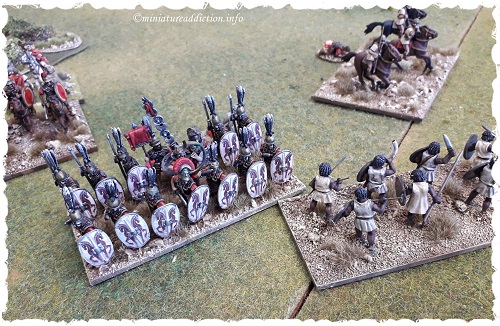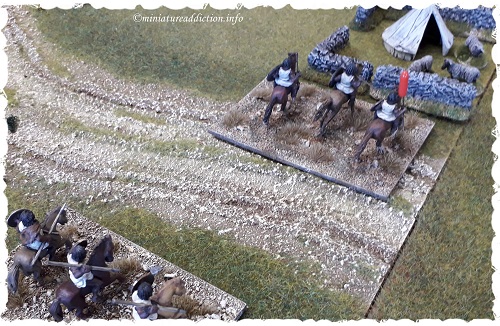I have barely managed to make it out to the hobby room this Christmas break. All the best laid plans I had for gaming and painting seem to have slipped through my fingers and I’m back at the grind stone already. However, the timely arrival of the new Impetus rules (second edition) and a five-day weekend has seen me sneak in a quick game or two. Heck, I even managed to truck out to a friends place for a 15mm Napoleonic bash to boot.
The following photos are of the two 400 point 28mm games I played on a six by four foot table. These games were my second and third run through of the rules the first of which is covered in more detail here.
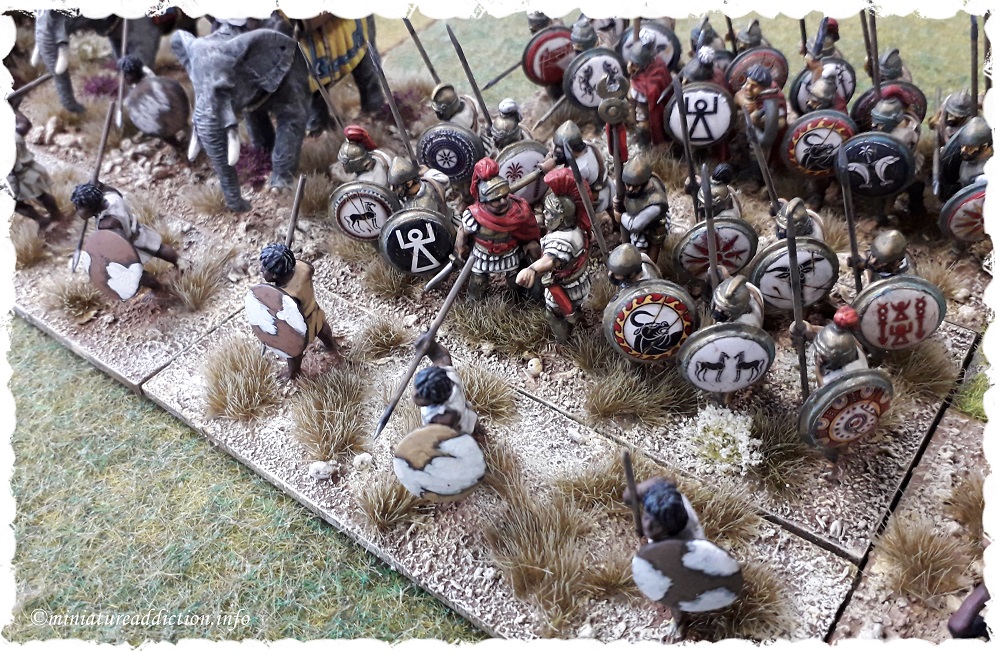
I’d like to say overall, this second edition is a step in the right direction from its predecessor, but in truth I haven’t really played first edition enough to justify a statement like that. The book does look good and although the Italian to English translation sometimes takes careful reading, generally I like this updated version of the rules.
Spanish Celtiberians face off against Carthaginians in the first game featured here.
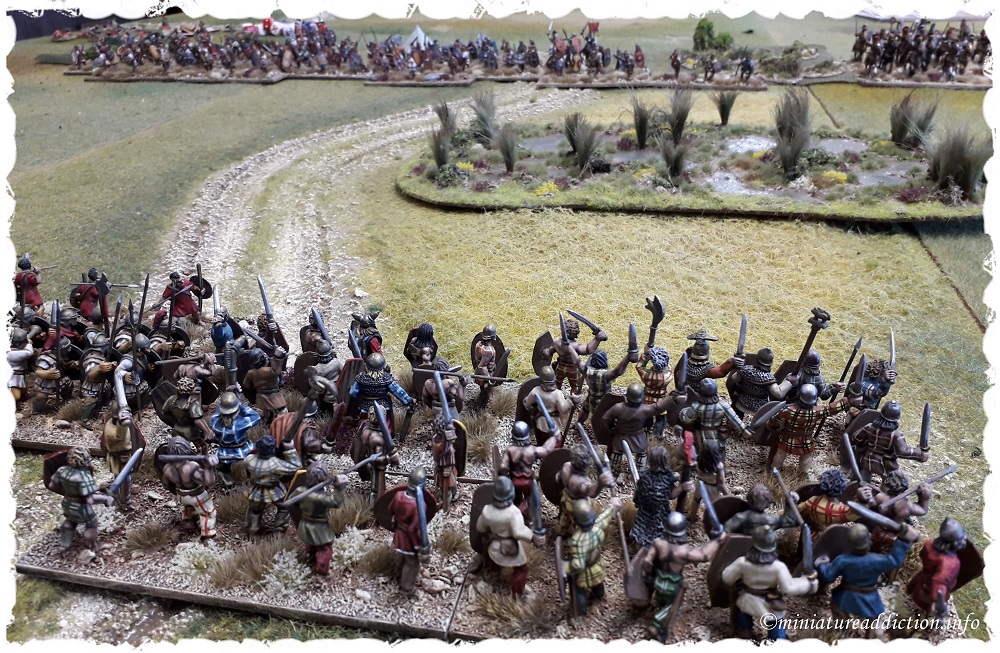
Spanish troops advance in the centre.
The Carthaginian Commander maintains order.
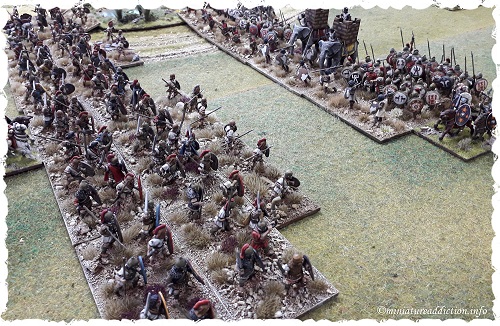

The main battle lines close on each other.
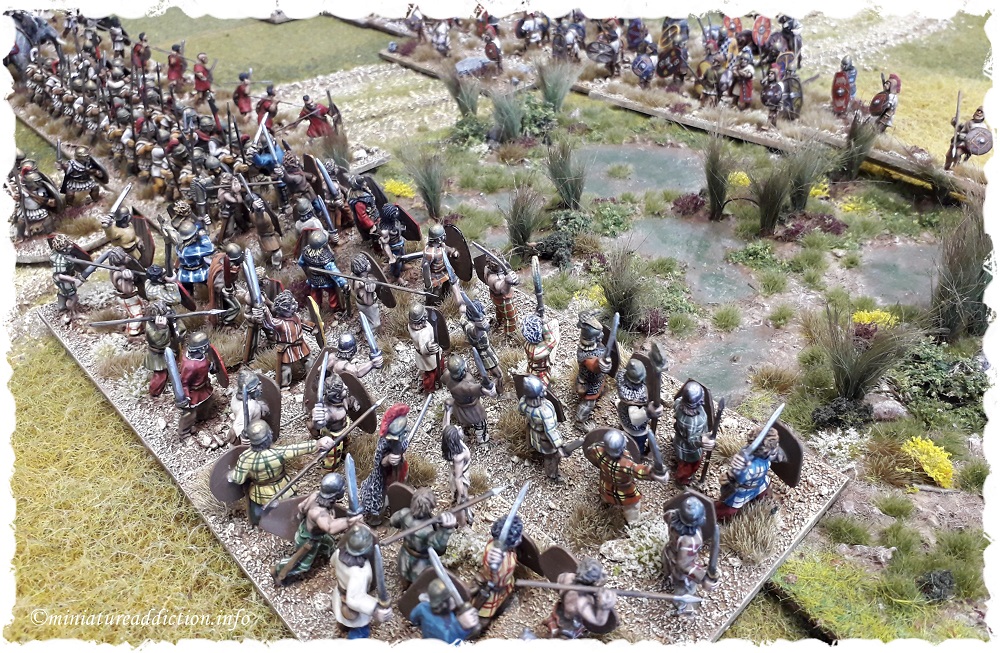
The Carthaginian centre crumbles as casualties mount
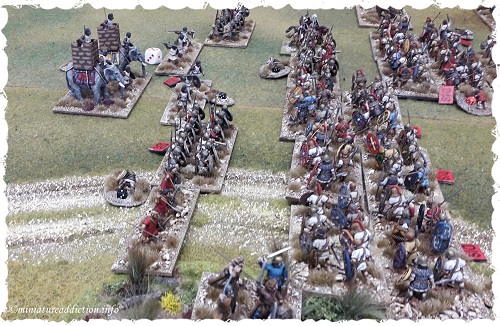

Spanish cavalry on the right are no match for the Numidians
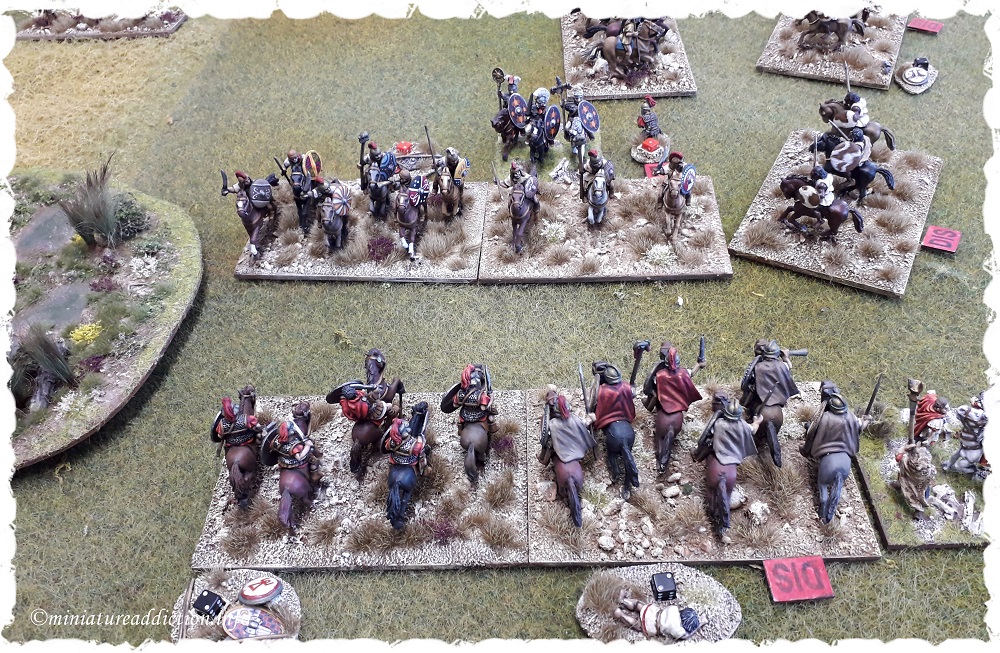
After a tuff fight the Gauls break through the Spanish lines
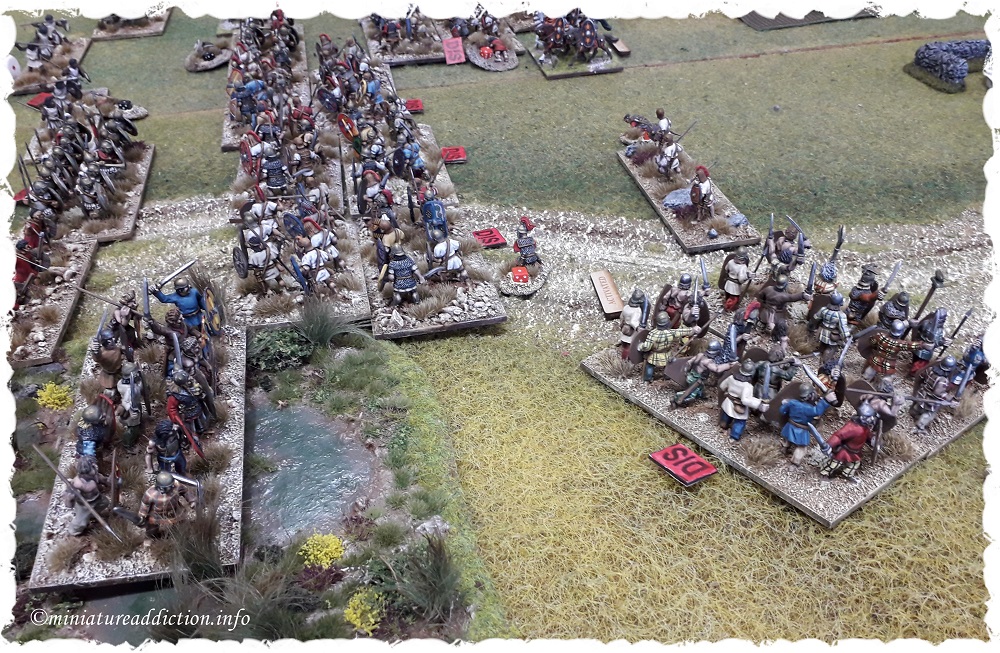
Spanish cavalry struggle to contain the Numidians as the Carthaginian centre falls apart , game over.
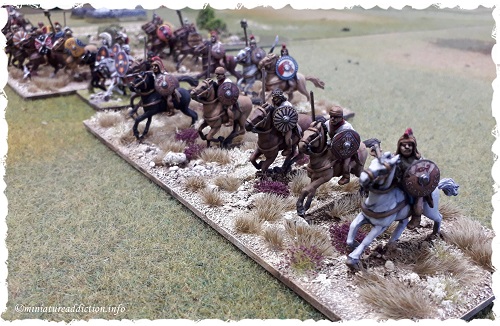
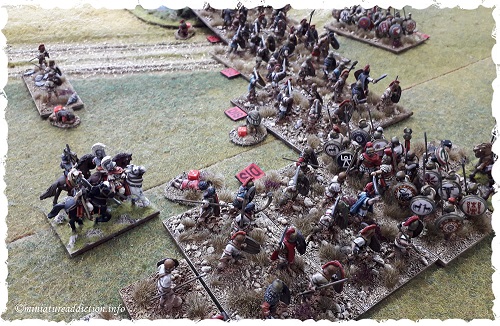
Game two: Romans vs Numidians

I wasn’t sure how this game would play out to be honest. Big bases on a small table coupled with the fact that units can multi-move lend me to believe the Numidian army might struggle for maneuver room. Potentially the Roman heavy infantry could (all going well with the dice) multi-move across the table and corner the lighter Numidian troops. In an effort to counter the Roman advantage I spent some army points upgrading all the Numidian cavalry, adding characteristic bonuses to some of their commanders and bought a few tactical cards. The results of which saw the Roman army withdraw from the field of battle under a hail of javelin fire.
Roman infantry races across the field to charge the Numidian cavalry
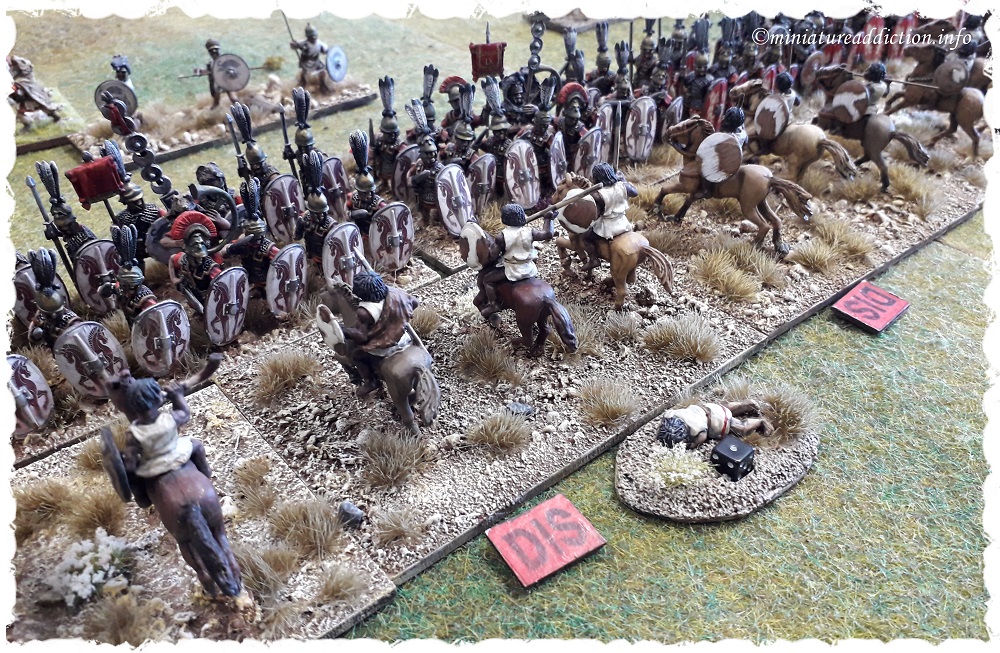
Numidian elephants crash into the Roman centre pinning it in place
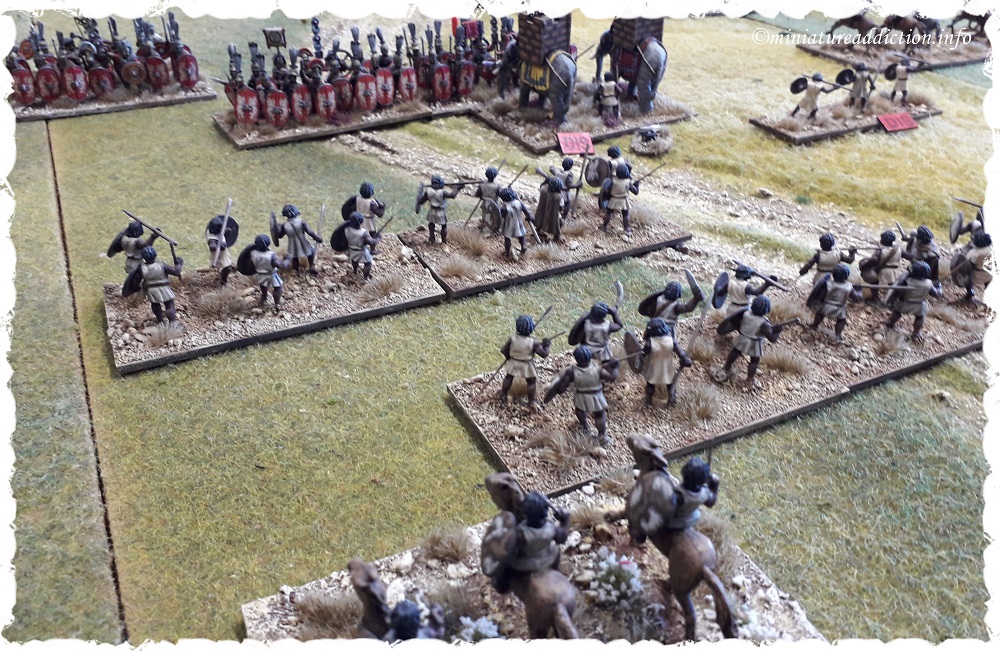
On the Roman right Spanish light troops face Numidian cavalry

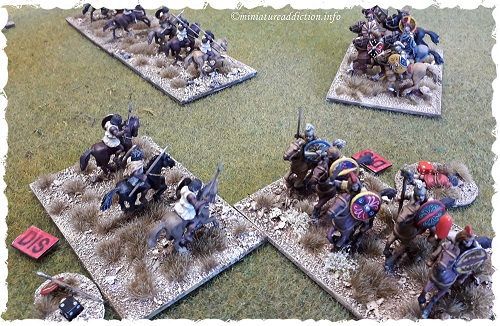
The last Romans fight on while enemy cavalry sack their camp.
